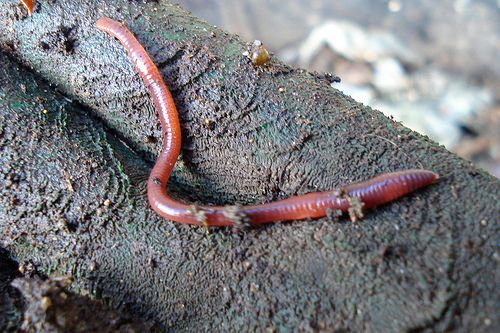The Unbelievable World of Red Wigglers: Boost Your Soil Fertility Today
The duty of red wigglers, or Eisenia fetida, in enhancing dirt fertility is a subject of expanding passion among garden enthusiasts and agricultural specialists. These little yet reliable organisms transform organic waste into useful worm castings, substantially improving dirt health and wellness and promoting lasting methods. As we discover the advantages of vermicomposting and the practical actions to produce an effective worm bin, the prospective influence of these worms on your horticulture success ends up being increasingly apparent. Comprehending the subtleties of their treatment and application might simply alter the means you come close to dirt monitoring. What understandings can be obtained from integrating these amazing creatures right into your gardening regimen?
Recognizing Red Wigglers
Red wigglers, clinically understood as Eisenia fetida, are a varieties of earthworm that play a crucial role in boosting dirt fertility. These worms flourish in organic-rich environments, such as compost heap and decaying plant product, where they eat organic waste and excrete nutrient-dense spreadings. Their one-of-a-kind makeup, including a segmented body and a clitellum, allows them to reproduce rapidly and successfully process huge amounts of raw material.

The eco-friendly significance of red wigglers prolongs past plain waste handling; they add to the dirt food internet, cultivating a diverse community of microorganisms that even more improve soil health. Comprehending the biology and habits of red wigglers is essential for harnessing their complete possibility in sustainable farming and horticulture methods.
Benefits of Vermicomposting
(Red Wiggler Express)Utilizing the power of red wigglers through vermicomposting offers numerous benefits that significantly improve dirt health and wellness and fertility. Among the main benefits is the production of nutrient-rich worm spreadings, which are an excellent natural plant food. Red Wiggler Express. These castings consist of important nutrients like nitrogen, phosphorus, and potassium, advertising robust plant development and improving plant yields
In addition, vermicomposting enhances dirt structure and oygenation. The presence of worm spreadings enhances dirt structure, permitting better water retention and drain. This well balanced dampness level is critical for root advancement and the general wellness of plants. Red wigglers assist damage down natural issue, increasing decomposition and recycling nutrients back into the dirt.
Vermicomposting additionally cultivates microbial task, which is vital for a healthy soil community. Beneficial microbes flourish in the visibility of worm castings, helping in the failure of natural materials and improving vitamins and mineral availability to plants.
Last but not least, vermicomposting works as an efficient waste management option, reducing garbage dump waste by reusing cooking area scraps and other natural Red Wiggler Express materials. This not only adds to environmental sustainability yet also advertises a round economic situation within gardening and farming.
How to Establish a Worm Container
Establishing a worm container is a straightforward process that can substantially improve your composting efforts. Begin by selecting an appropriate container, which can vary from a readily readily available worm container to a straightforward plastic or wood box (Red Wiggler Express). Ensure the container has adequate air flow; small holes in the lid and sides will facilitate air circulation
Following, develop a bed linens layer to give a comfy setting for the red wigglers. This can be made from shredded newspaper, cardboard, or coconut coir, moistened to a wet, sponge-like consistency. Fill the container to about one-third complete with this bedding product.
When the bed linens is prepared, it's time to introduce the worms. Red wigglers prosper in natural waste, so location them delicately onto the bed linen. Cover the worms with a light layer of added bed linen to aid them adapt.
Feeding Your Red Wigglers
Offering the appropriate food for your red wigglers is important for their wellness and the efficiency of your composting system. Red wigglers prosper on a varied diet regimen, mainly including organic products such as vegetables and fruit scraps, coffee premises, and shredded paper. These materials not just give essential nutrients however likewise add to the microbial activity in the worm bin, which is essential for the worms' digestion.
It is very important to stay clear of certain foods, such as milk items, oils, and meats, as these can bring in parasites and develop unpleasant smells. Furthermore, citrus peels and extremely spicy foods should be restricted as a result of their prospective to hurt the worms. A balanced approach to feeding involves monitoring the amount of food presented to the container, making sure that it is consumed within a practical period to protect against excess waste accumulation.
To promote optimal food digestion, it is advantageous to cut or shred larger food products prior to including them to the bin. This practice boosts the area for microbial action, assisting in quicker disintegration and enhancing the general effectiveness of your composting system. Regularly observing the worms' feeding practices will certainly aid you readjust their diet as essential.
Using Worm Castings in Your Garden

(Red Wiggler Express)Including worm spreadings into your yard can be achieved by mixing them into the soil or using them as a leading clothing. The slow-release nature of these spreadings makes certain that nutrients are available to plants over an extended duration, lowering the requirement for artificial plant foods. Furthermore, worm castings include useful microbes that advertise healthy and balanced soil communities, enhancing the total durability of your garden.
To take full advantage of the benefits, purpose to apply approximately one component worm castings to 3 parts soil in your growing beds. Regular applications can lead to boosted crop returns and much healthier plants, making worm spreadings an invaluable resource for both novice and experienced gardeners alike. By using this all-natural modification, you can cultivate a successful garden while adding to lasting horticulture techniques.
Verdict
Finally, red wigglers exhibit the essential function of vermicomposting in enhancing soil fertility. Their capacity to transform natural waste into nutrient-rich spreadings considerably enriches dirt structure and sustains microbial diversity. Developing a vermicomposting system not only promotes sustainable gardening techniques however additionally contributes to ecological wellness. By leveraging the advantages of these exceptional organisms, garden enthusiasts can grow much more productive and resilient ecological communities, inevitably fostering a much more lasting approach to agriculture and gardening.